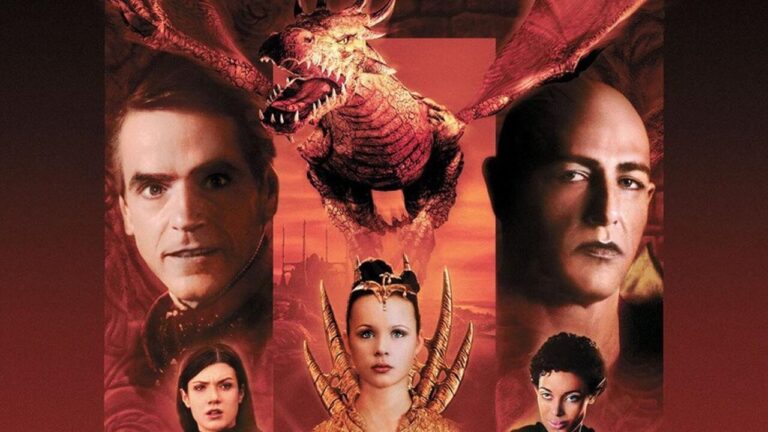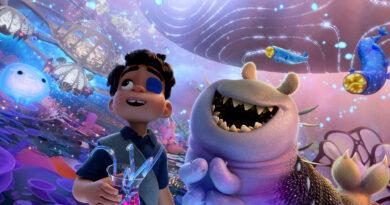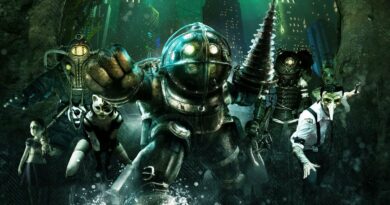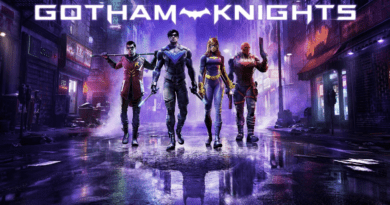
Dungeons & Dragons is an Older Style of Fantasy Movie
By Domonic Riley
One of the staples of ‘70s and ‘80s pop culture was the tabletop game Dungeons & Dragons. It
became the most famous role playing game in history, being many people’s first introduction to
the format and expanding over time to include other media, including books, video games, and a
movie.
While the possibilities of the game might seem a natural choice for a movie, particularly in the
fantasy obsessed ‘80s, fans would have to wait until the year 2000 to see their favorite game on
screen, after Courtenay Solomon had acquired the rights to the D&D franchise, and set about
writing and directing his own adaptation.
His idea for the movie was that it would appeal to both hardcore players of the game, as well as
casual fantasy fans, which led to some references being toned down. The main characters were
still inspired by the game, however, with the group of questors made up of a thief, mage, elf and
dwarf, all popular character choices for players. Similarly, the movie’s story resembled a game,
with a classic quest plot, featuring a scene in a maze filled with traps such as swinging axes and
pressure plates in the floor which the main character has to navigate to find an important item.
Other references included a multi-eyed creature known as a Beholder and, of course, the titular
dragons.
One of the most important features of the movie lies in its release date of 2000. This was only a
year before Peter Jackson’s first Lord of the Rings movie would hit theaters, and it shows just
how much would change for fantasy cinema over the next couple of years. Once Middle Earth
was shown onscreen, fantasy movies became big business, with studios stripping the shelves for
material they could adapt into the next big hit, taking novels and classic fairytales and giving
them big budgets and heavy special effects to try and recreate Peter Jackson’s success.
This is where Dungeons & Dragons differs the most. It’s definitely an older style of fantasy
movie, one that sets out to thrill and entertain, showing its audience some spectacle but not
taking as much time to build an expansive world. If it had been made just a few years later, it’s
likely to have featured staples of modern fantasy, such as a large set-piece battle and more epic
plot. As it is, it managed to avoid most of that and remain true to its roots.
Almost everything about the movie owes a debt to an earlier style of fantasy cinema, one filled
with the likes of Labyrinth and Dragonheart. Its lineage is clear to see in Jeremy Irons’ main
villain, who hams up his performance magnificently in every scene, never attempting to create a
subtle or sinister bad guy. A similar character is Marlon Wayans’ Snails, who’s mainly in the
movie for comic relief, with most of his scenes being outright comedy.
A similar approach is taken with worldbuilding. Many of the location and design choices are
taken with the intention of looking great on camera, rather than creating a cohesive fantasy
world. Things such as the Thieves’ Guild, which appeared randomly and seems a rather obvious
plot device would be unlikely to appear today.
While it is related to an older style of movie, one place where it never falls short is in the effects
work. By the time of its production, practical effects were giving way to computer technology,
meaning that CGI had to be used for several important scenes, including the climactic dragon
battle, featuring dozens of the creatures fighting against each other in the sky. At a time when
such effects were still extremely expensive, D&D did an impressive job with a smaller budget
than releases such as The Phantom Menace.
At its core, Dungeons & Dragons is an entertaining movie with few pretensions. The kind of
movie that can be enjoyed for 90 minutes or so with no need to venture further into its fictional
world. Its story is self-contained, it never flies too high with its plot or character development,
and there’s always a slight sense that no one is taking the fantasy setting too seriously, allowing
for a freer kind of story where almost anything can happen without explanation.
It will be interesting to see whether the new movie based on the property, Dungeons & Dragons:
Honor Among Thieves draws its inspiration from this film, or from the newer style of fantasy
such as Lord of the Rings and Game of Thrones, and whether a simpler kind of movie can be a
big hit today.



